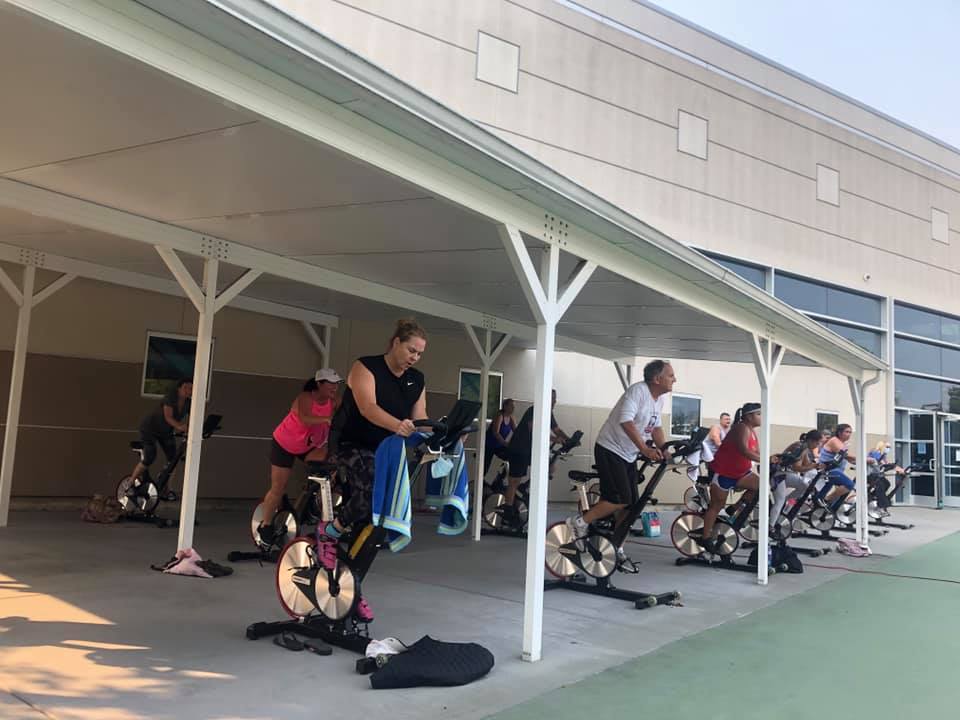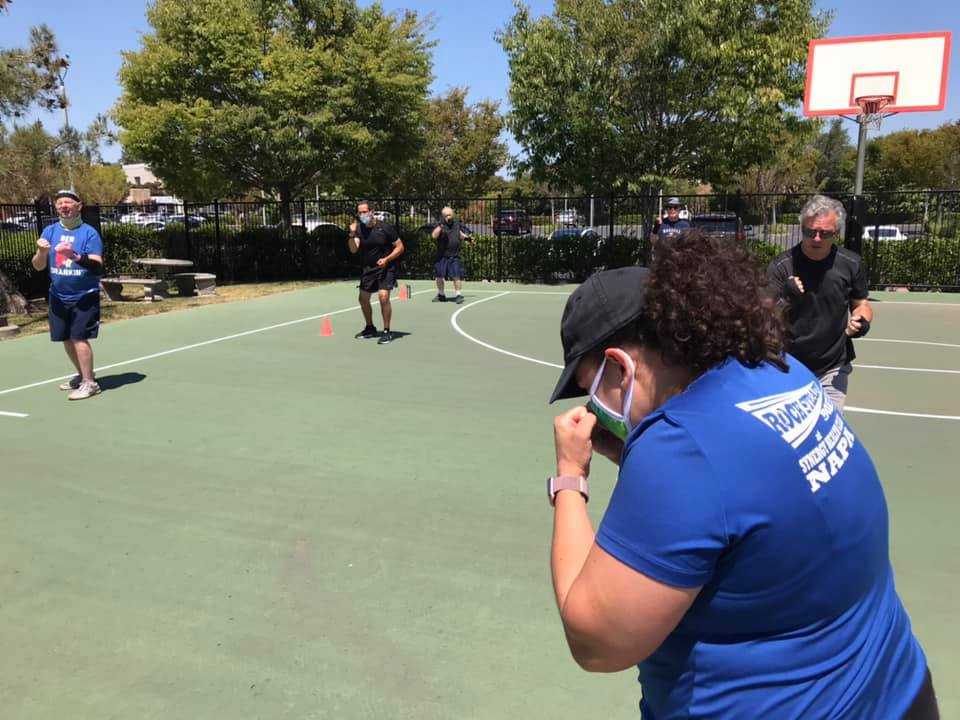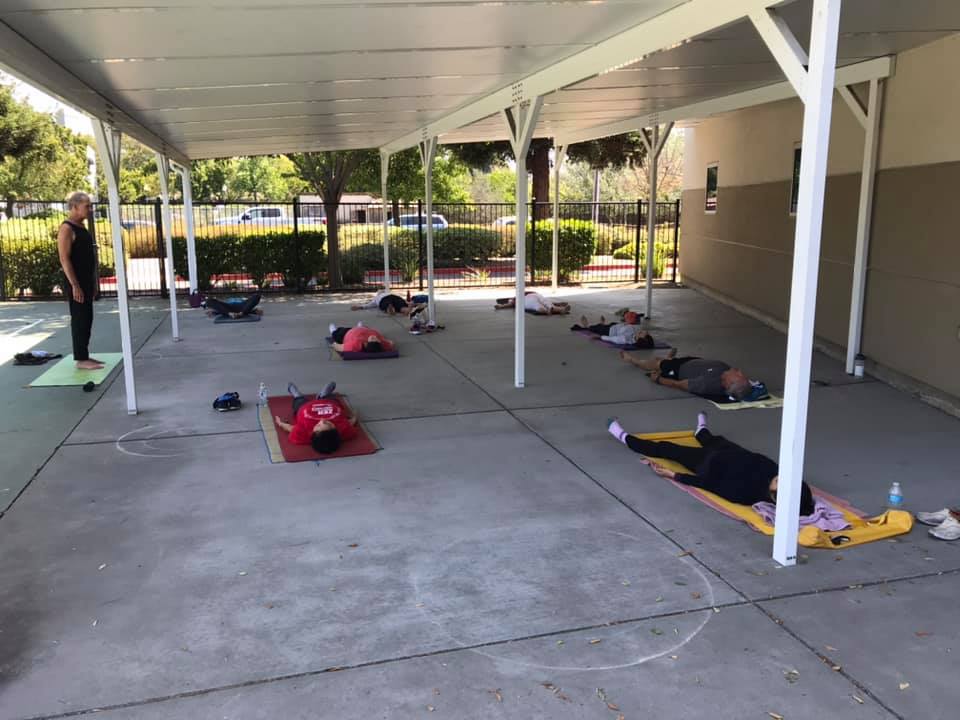 With many gyms across the US still closed and members hesitant to walk through your fitness center doors, outdoor fitness programming is a great option to engage with your community and help your members get back to their workouts, giving them the confidence that fitness centers are safe.
With many gyms across the US still closed and members hesitant to walk through your fitness center doors, outdoor fitness programming is a great option to engage with your community and help your members get back to their workouts, giving them the confidence that fitness centers are safe.
We asked our Northern California General Managers some questions around what they are doing at their clubs to facilitate successful outdoor fitness programming.
What programs or classes formats do you recommend for outdoors?
Classes that utilize small pieces of equipment like body bars, dumbbells or stationary are ideal. Mobile equipment such as spin bikes are nice too since they move easily. Also, aim for classes that don’t require the participants to move outside their bubble. Our top five classes for outdoor classes include cycle/spin, yoga, pilates/barre, HIIT and strength.
How much space do you need to host outdoor fitness programming?
The more space the better, but aim for at least 8-10 feet between participants. It’s very dependent on which type of class is being offered as well. For example, in a lower-intensity class, like yoga where participants stay on a mat and are not breathing very hard, participants can be closer together, 6 - 8 feet. A higher-intensity class like cycling (no movement but lots of hard breathing) should be a bit further apart and classes such as ZUMBA(where there is some movement as well as hard breathing) should have maximum space to avoid entering other people's workouts “spheres” as much as possible, 8-12 feet apart.
What equipment do you need or recommend for outdoor workouts?
The less equipment the better. Body bars, small dumbbells, or other small items that are easily cleanable are ideal. We recommend creating stations for each equipment set so that participants each have their own set of equipment to use for class, without worrying about people sharing equipment on accident. Ideally, find a space just inside the building or a securable space outside that the equipment can be kept, as close as possible to the class delivery area, to limit the distance the equipment has to be moved before and after class.

How do you handle music outside?
Music adds to the energy of the class and is ideal, but depending on the ambient noise in the outdoor space, it may not be feasible. A simple bluetooth portable speaker with a wireless microphone will suffice, provided there are ways for instructors to easily sanitize the equipment. It’s also important to evaluate the impact music could or will have on surrounding businesses or residents, and have courtesy conversations with neighboring residents and business owners.
Test the speaker to find your optimal volume level and angle to deliver the music so that all participants can hear the music and instructions, while limiting disruption to those neighboring residents or businesses.
How should members reserve their space for outdoor programming?
Use of your operating systems’ online reservation system or app capabilities are essential for scheduling gym time and classes now, whether your class is inside or out. Make sure to walk through the process as a member to ensure it is as simple as possible. It’s also a good idea to have FAQ’s and contact information in case someone is having trouble registering for a class online.
Should members bring anything or do anything different in preparation for outdoor classes or workouts?
Members should only bring what is absolutely necessary to class and keep gym bags and other belongings that are non-essential at home. A refillable water bottle is always highly suggested and a towel if needed. If a class requires a mat, have members bring their own. Always be sure to check the weather to ensure you are prepared for any sudden or last-minute changes.

How do you ensure social distancing?
The instructor has the most important role in ensuring social distancing guidelines when delivering outdoor programming. They need to be sure to familiarize themselves with the area they are instructing in, as well as the designated or marked areas where members will be working out. If chalk or markings have worn off or have been moved, ensure they are placed back in the proper place prior to members’ arrival. It’s helpful to use markings on the ground to help distinguish workout spaces such as masking tape or spray paint. That gives the member an anchor point to stay near or on during their workout.
A friendly reminder upon arrival to ensure they keep a safe social distance, and a final reminder after class has concluded and cleaning, clean-up, and member departure is always best. We are creatures of habit so when it comes to social distancing, there’s no such thing as too many reminders.
Ideas/suggestions with cold or wet weather?
When the weather dips and is much colder, have instructors lead participants through a slower, more dynamic warm-up to ensure they are prepared for the class being delivered. You can also encourage members to wear layers as they will warm up once they get moving.
For wet conditions, it’s important to make sure the surface is safe to exercise on to avoid anyone from slipping, sliding, or any type of injury. If your budget allows it, investing in temporary or permanent tents, umbrellas or awnings will help.
For more best practice and support with your outdoor fitness programming contact the Active Team today.

Devin Johnson is the General Manager of Synergy Health Club Napa. He’s been coping with the stresses of 2020 by making many trips to the dog park with his soon-to-be wife and two fur babies, Callie and Ranger.

Sergio Castro is the General Manager of Synergy Health Club Petaluma. These days he’s spending a lot of time with his wife, dog, and 8-month-old son as well as plenty of Zoom happy hours with friends!


